
A common question every gout patient asks when experiencing knee or foot pain during a painful gout flare up is: “Should I walk with gout?”, fearing that physical activity will make their pain worse. This article examines how walking and exercise are related to gout attacks.
Let’s dive in!
Is it better to walk or rest with gout?
Gout patients are often hesitant to walk or do any other physical activity, not knowing whether it will improve or worsen their condition.
The answer is that there is a difference between what you should do during a gout attack, as opposed to after a gout attack.
A gout attack or gout flare is a stage of gout when inflammation in the affected joint is highest and signs of gout are most noticeable.
A gout flare usually affects only one joint, the big toe joint first but it can target any joint in your body including the heel or even the shoulder and elbow. It is characterized by the following signs and symptoms in the affected joints:
- Severe pain
- Swelling
- Tenderness
- Increased warmth
- Decreased ability to move
Should you stay off your feet with gout?
When you have gout in your affected foot, knee or hip, the first step in treating a gout flare and to speed up your recovery, shortening its duration and the intense swelling and pain to subside as fast as possible, is resting your affected joint well, avoiding any activity or exercise, even staying off your feet, as they can expose the vulnerable affected joint to more pressure and injuries.
Joint injuries will make the flare up more intense and more lasting in addition to expose your joint to further complications, and other symptoms such as joint cartilage damage, arthritis caused additional inflammation and swelling which will lead to more joint damage, more free radicals attacking your joint tissues, and possible joint infection (septic arthritis).
Resting your joint is the rule especially the 2 or 3 first days of attack. When the inflammation and intense pain start to be less noticed and more bearable, at that stage start to regain your physical activity and to move your joint gradually.
Does walking make gout attack worse?
It is recommended that you should not walk much or do moderate exercise during a gout flare for up to two weeks. During gout attacks, an activity as simple as moving your joints can cause severe joint pain and discomfort
It is suggested to use a cane to help you walk when a flare up is ongoing. The cane serves as a walking aid, providing support and reducing weight on your feet and other joints.
Once the gout flare is over, the pain becomes more bearable. This is the time when you need to start walking and exercising to keep the joints active.
How long should you rest for gout?
When you have a gout flare, it is very important to get enough rest. The pain experienced by a gout sufferer during this period is excruciating.
Since any kind of movement makes the pain worse, it is strongly suggested that you should rest your joints until the gout flare up subsides.
A gout attack can last from a few days to a few weeks. It is most difficult to deal with in the first one or two days after its onset. You can get through a gout flare-up with minimal pain and discomfort by:
- Resting your joints until the attack ends
- Elevating your joints
- Moving only when necessary
What stops gout pain immediately?
Resting your joints can be combined with fast gout treatment options that provide quick pain relief. One of the most effective quick options for the treatment of gout attacks is Dr. Elix gout pain relief.
Dr. Elix’s gout pain medication has powerful anti-inflammatory, antibacterial and antiseptic properties, and breaks up and dissolves joint deposited gout crystals, providing effective gout pain relief in as little as 7-15 minutes. It is easy to use and has proven to be a treatment option that people with gout appreciate.
Read more on: Immediate Gout Pain Relief Best Option By Dr. Elix
How to stay active after a gout attack?
It is important to remember that you should slowly get back to exercising after gout flares. At the end of an attack, your joints are weaker and more vulnerable from the inflammation.
That’s why you should start with low-intensity exercises first, to prevent further joint pain and injury. It is suggested to walk or cycle carefully for only a few minutes a day and avoid tiring activities. Then you can gradually and slowly increase the load on the joints.
Performing physical activities (such as walking) lowers uric acid levels and improves pain over time. It is advisable to carefully monitor and plan your activities.
What is the best way to walk with gout?
According to the Arthritis Foundation and the Centers for Disease Control and Prevention (CDC), walking is a joint friendly physical activity which can be taken up by people of any age, skill level or stage of joint disease. It keeps the body active, helps in weight loss, maintains cardiovascular health and a healthy mind.
But you still need to be careful about the risks associated with it. When walking is overdone or performed for a long time, it can cause extremely painful joint, injuries and further aggravate gout symptoms.
How to walk with gout?
The first thing you should do is inform your doctor that you are going to start exercising by walking. Your doctor will check your medical history and give you any advice that you may need.
- Start small. Starting with a few steps a day and gradually increasing the intensity of exercise with time is key to enhance gout pain.
- Wear the best walking shoes for you. Choosing supportive and comfortable shoes for your feet is very important. Evidence suggests that good footwear reduces the load on joints and provides supportive care for gout.
- Keep a steady walking pace. This means you should always keep a walking pace that you are most comfortable with. You can do this by paying attention to your heart rate and pressure on your joints when you are walking.
- Find a walking partner. Walking with a friend or partner boosts your motivation, raises your energy, and makes your activity more enjoyable.
- Combine walking with other exercises. Walking can be done together with other exercises that are recommended by the Arthritis Foundation. These include:
- Cycling with recumbent and stationary bikes. Both of these bike types are great ways to engage your joints without putting too much pressure on them.
- Resistance training (training with weights). This type of training is a must-do for gout sufferers as it strengthens the muscles that protect the joints from overuse.
- Swimming or water aerobics. Swimming is recommended as an all-round exercise for everyone! It is particularly helpful in more advanced arthritis cases, as it is performed in water, an environment where the joints have minimal pressure on them.
- Tai chi and yoga. These exercises help you achieve joint flexibility and balance. They also help you relax your mind and feel in control of your body.
All about gout
Gout is a type of arthritis that affects the joints of the body. This results from high uric acid levels in the blood. Uric acid, by-product of purine breakdown, is produced normally in the body and excreted via urine.
When gout flares and the level of uric acid increases, deposits in the joints called uric acid crystals or monosodium urate crystals are formed. These urate crystals cause joint intense pain and other signs and symptoms of gout.
Risk factors of gout
Gout affects more than 8 million Americans. A higher risk of having gout is associated with:
- Family history of gout
- Being male
- Postmenopausal women
- Excess body weight
- Foods rich in purines (red meats, seafood, etc.)
- Sugary drinks (high-fructose corn syrup, sodas, fruit juices)
- Alcohol consumption (beer, liquor)
- Some medications (aspirin, diuretics, etc.)
- Related medical conditions (high blood pressure/heart di, diabetes, kidneys disease, etc.)
If you experience symptoms or signs of gout, you should consult your doctor. Your doctor will ask you questions related to your medical condition and may advice you to do some tests. These tests include the following:
- Blood test
- Joint fluid analysis test
- Ultrasound of joints
- X-ray of joints
You can relieve pain fast by opting for the following treatment options:
- Dr. Elix gout pain relief
- Rest your joints
- Elevate your joints
- Apply cold compresses or soak in cold water.
Lifestyle and diet
To manage gout long-term, you should also make changes to your lifestyle and opt for a healthy diet, as advised by your doctor. Healthy lifestyle habits include:
- Walking and exercise
- Good hydration
- Adequate sleep
- Reduced stress
- Keep a healthy weight
An appropriate gout diet plan should include some foods and drinks, and avoid others:
- Consume healthy foods and drinks that are low in purines and sugar
- Avoid alcoholic drinks
- Avoid purine-rich foods
- Avoid sweetened drinks
Gout medications
Medications for gout symptoms can be used to reduce pain or lowering uric acid levels which allow to prevent future gout flares.
Anti-inflammatory medications include:
- OTC medications such as NSAIDs (Non-steroidal anti-inflammatory drugs)
- Corticosteroids
- Colchicine
Long-term medications to reduce uric acid levels are:
- Xanthine oxidase inhibitor medications (Allopurinol & Febuxostat)
- Uricosurics (Probenecid & Pegloticase)
If it is left untreated, people with gout can develop dangerous complications such as osteoarthritis and kidney stones.
If you opt for natural treatment ways, we invite you to check out these selected gout home remedies as great side-effects free alternatives to long-term gout medications.
Indeed home remedies are proven to be effective in reducing uric acid production and promote its elimination by the kidneys, keeping your uric acid levels at their healthy range. Moreover, they combine several therapeutic effects to take care of your whole health, which is an efficient way to managing gout.
Takeaways
Gout is a type of arthritis that causes joint excruciating pain and swelling. It results from high uric acid levels in the blood.
Exercising is One of the factors that reduce inflammation and improves gout symptoms. Walking, swimming and cycling are the best exercises to reduce inflammation and manage gout symptoms.
Walking is a safe and joint friendly physical activity which can be taken up by anyone. But you should still be careful about the risks that may be associated with it.
Should I Walk with Gout? : it is recommended that you should not walk or exercise during gout flare ups. After a typical gout flare ends, pain becomes easier to bear. This is the time when you can start walking and exercising again to keep your joints active.
Starting with small steps and gradually increasing physical activity over time is key when it comes to walking and exercise for people with gout.
Dr. Elix gout pain relief is one of the most effective and powerful gout treatment options. It is able to significantly reduce gout pain in minutes, break up and dissolve gout crystals, and heal joint tissues.

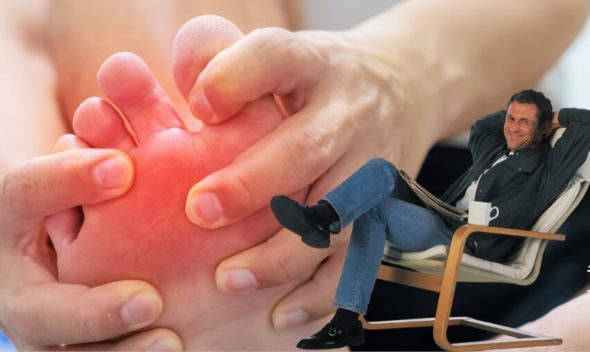

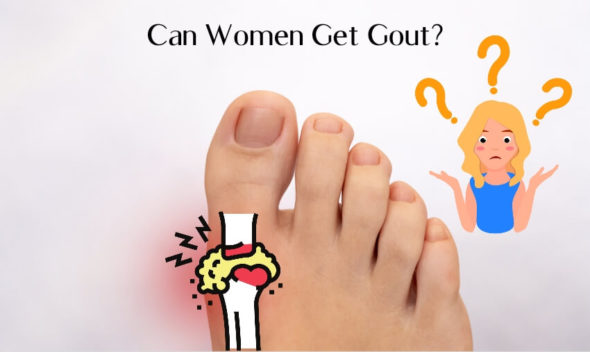

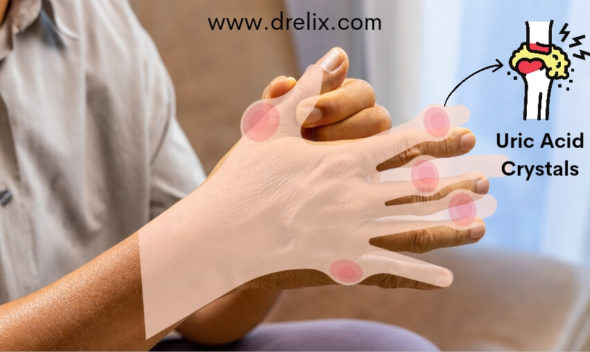
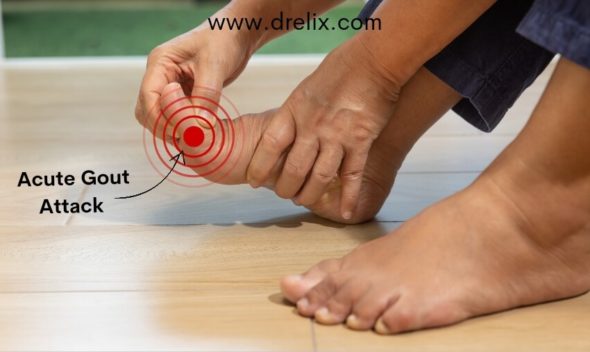
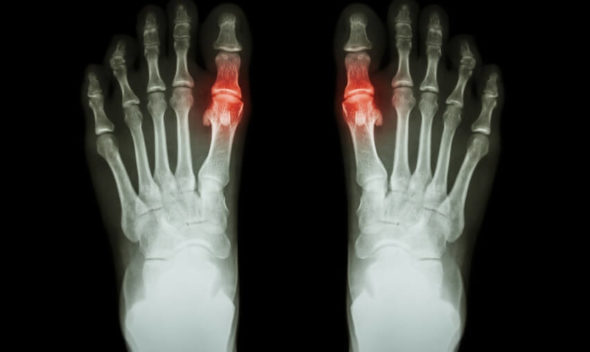





Leave a comment